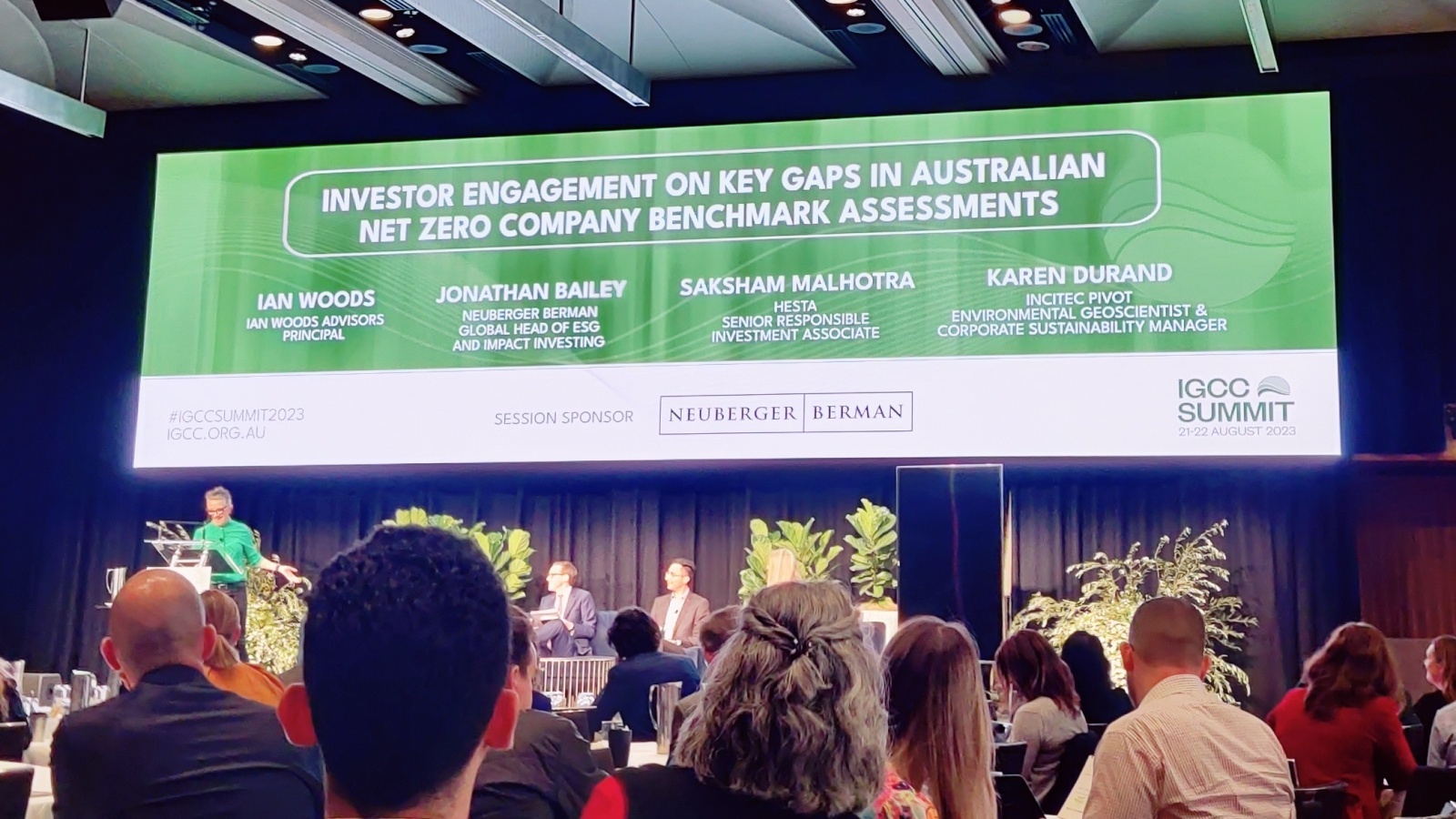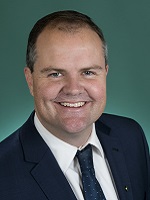
IGCC Summit Day 1: Spotlight on policy, capital allocation and engagement
At the IGCC Summit in Sydney, asset owners are digging deep on decarbonisation down under.
“What you are hearing this morning is a mandate for action”, declared Chris Bowen as Australia’s minister for climate change and energy virtually addressed the IGCC’s 5th annual summit on Monday.
The Investor Group on Climate Change (IGCC), an institutional investor coalition whose 102 members manage over $30 trillion, is hosting its annual gathering in Sydney, Australia.
On Day one, conversations revolved around the nuts and bolts of Australia’s fast moving regulatory environment, drivers of capital allocation by asset owners and a progress report on investor engagement at Australia’s largest corporations.
Politics of Climate Policy
The past 18 months has been a period of intense regulatory innovation for climate policy down under. Following the election of the Anthony Albanese-led Labor government in 2022, tightening Australia’s climate rules has been a priority for Canberra.
Working on pathways for sectoral decarbonisation, setting a 82% by 2030 renewables target, a soon-to-be-published taxonomy and the likely import of global standards into domestic reporting measures are amongst the set of tasks Australia’s government has focused on.
"You don’t close one system without having another replacement system ready to go."

Policymakers therefore faced a room full of questions and queries at the IGCC summit.
Minister Bowen mentioned the government’s objective of providing investors with a “stable regulatory environment”. To that end, he outlined the government’s on-going pipeline of policy projects – including a draft sustainable finance policy.
Perhaps the most widely discussed rule change however, had to do with mandatory climate disclosures in Australia. An entire panel was dedicated to it for good reason.
Rebecca McCallum, director, climate disclosure at the Australian Treasury, defended the upcoming mandatory disclosure regime based on its transparency benefits.
The Treasury has recently concluded a second round of consultations, which according to McCallum, received strong support.
April Mackenzie, CEO of New Zealand’s External Reporting Board, shared lessons from her country’s experience. Her comments addressed concerns over imperfections in the reporting frameworks – which often stymie progress.
“Don’t let perfection get in the way”, she asserted. Her other piece of advice – the focus of reporting is broader than the incentivising the act of reporting. “Behavioural change”, she stated, was the key target of climate disclosure regimes.
However, where there is policy, there is politics. When shadow minister for climate change and energy Ted O’Brien addressed the room, he underscored the need to “balance objectives” – referring to the twin goals of reducing emissions whilst maintaining Australia’s economic competitiveness.
O’Brien was not confident about the promise of cheaper renewables under current models, something the Albanese government has thrown its weight behind.
Much of the shadow minister’s concerns seemed to circle back to prematurely shutting down existing fossil fuel capacity to make way for renewables:
“You don’t close one system without having another replacement system ready to go”, he warned. The shadow minister clarified that this did not equate to abandoning the renewables agenda.
Capital Allocation
A C-suite panel saw asset owners discuss the details of capital allocation amidst a challenging and at times, risky energy transition.
For Vicki Doyle, CEO of Rest – an Australian super fund, the demographics of members was a key factor to consider.
“We have more than a million members who will retire post 2050”, she said. This, in turn, would significantly influence the construction of portfolios and the allocation mix within them.
Ambition, according to Doyle, was the backbone of investment decisions. “Ambition is important because this is a big problem to solve and the clock is ticking”, she said.
Damian Graham, chief investment officer at Aware Super, another asset owner, also stressed on the fund’s communication with its members regarding its investment decisions.
The feedback received from members, Graham said, was overwhelmingly focused on climate change. Feedback of this kind, he believed, mattered for how asset owners manage capital.
Ian Learmoth, CEO of the Clean Energy Finance Corporation, a specialised state-backed asset owner outlined the CEFC’s unique role in financing Australia’s transition.
Its profile allows CEFC to make riskier bets – early stage climate tech companies for instance and invest in expensive assets. CEFC recently received a $20.5 billion boost in funding, $ 19 billion which has been earmarked for transmission projects.
"Ambition is important because this is a big problem to solve and the clock is ticking."

Engagement and the CA100+ Benchmark
Climate Action 100+, a global investor initiative, made headlines in June when it announced a shift in how it will go about assessing target companies.
“The new phase, running until 2030, intends to inspire a global scale up in active ownership, markedly shifting the focus from corporate climate-related disclosure to the implementation of climate transition plans”, CA 100+ wrote.
The new phase of the CA 100+ Net Zero Company Benchmark and its utility to institutional investors was a key point of discussion at the IGCC summit.
Jonathan Bailey, global head of ESG at asset manager Neuberger Berman said, “Tools like the benchmark are useful as a common language”. It shifts, according to Berman, the focus away from a debate over terminology towards assessments of corporate capital allocation.
Bailey went on to mention that even though challenges remain with investor engagement, some progress has been made. He cited the case of Boeing, the aircraft manufacturer which according to Bailey “has gone from not having full [climate]oversight to having full oversight”.
Perhaps the most interesting insights came from the other end of the bargain – Karen Durand, corporate sustainability manager at Incitec Pivot Limited– an Australian chemicals manufacturer gave an insider’s account of climate planning within hard-to-abate sectors.
Durand stressed on the significant innovation hurdles that underscore the difficulty of emissions reduction in such sectors. Some solutions are known - “Electrify everything and decarbonise the grid”, she advised. Others, face hurdles.
In addition, she urged asset owners to “sit down with an industry and understand their challenges and their enablers”. Close dialogue, she believes, is needed for investors to uncover insights in hard-to-abate sectors.
Also read
Uncle Sam vs John Bull: the irresistible investor appeal of Biden’s IRA




